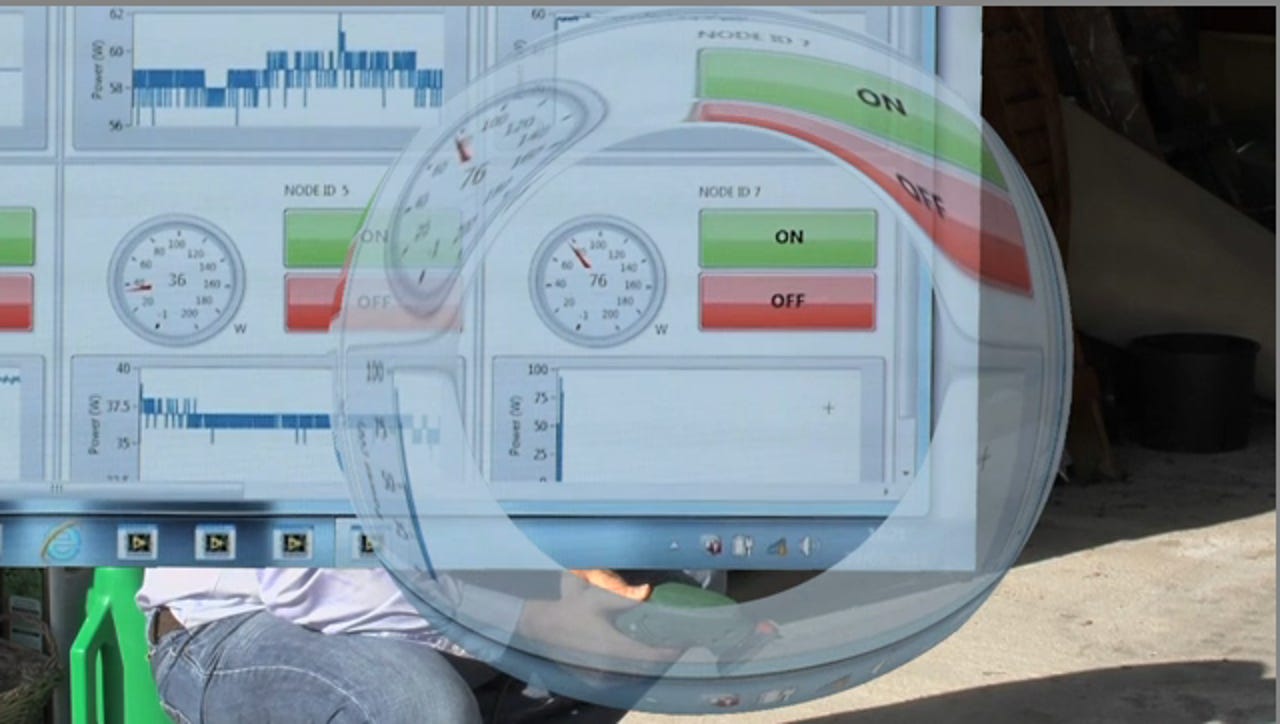Wattwave brings power line technology into the smarter home

*Updated images*
The concept of the "Internet of Things" has driven forward the idea that in future, 'smart' homes will contain appliances and devices which will be connected and controllable from smartphones and tablets.

There is a wide choice of wireless alternatives, from technologies like ZigBee and Z-Wave, which are used by smart home solutions today, to promising new technologies, including Bluetooth Smart and DECT ULE, which are appropriate for devices that are not connected to mains power (such as sensors).
However, in a real-world home environment, all of these wireless protocols suffer from the vagaries of signal propagation and interference from appliances and solidly built brick interior dividing walls in old homes.
We have all experienced the varying quality and intermittent nature of wi-fi signals in our homes and offices. Imagine the challenge of connecting dozens or even hundreds of devices, from door locks and temperature sensors to smart washing machines and connected LED lights in the smart home of the future.
Andy Heaton, founder and CEO of enModus, believes that there is no single communications protocol that can meet all requirements of the Internet of Things, or even all requirements of the smart home. However, there is another solution.
EnModus believes that part of this problem can be solved by connecting mains-powered devices in the smart home to the Internet of Things via the power line. Even though the domestic power circuit is not exactly a noise-less environment, it is less chaotic and more predictable than the airwaves.
Heaton reckons enModus' product Wattwave is the "ideal technology to become the backbone of the 21st century smart home". And backers agree. In June 2011, the startup secured $1.6 million in funding from Andromeda Capital.
Wattwave is a two-way power line communications technology that has been developed specifically for smart homes.
Compared to normal wireless technologies, it has an unbeatable range in the normal home.
It runs on an off-the-shelf micro controller that costs less than a dollar, giving it a far cheaper implementation cost than comparable solutions.
Designed specifically for low-bitrate smart home applications, Wattwave communicates over long distances — something that no wireless alternative has been able to do.
Enmodus has been developing Wattwave technology for about two years. Originally a concept, Wattwave is now out of the lab and into homes. You can control a range of appliances using Wattwave technology.
So how does it really work?
Wattwave is a two-way, full duplex communications protocol, designed specifically for smart home applications. It is a power line technology, operating in the CENELEC B band (~100 kHz), allowing it to co-exist happily with other power line communications technologies, such as HomePlug.
It uses techniques from technologies including TDMA, CDMA, and GPS to make optimal use of the limited bandwidth available in the CENELEC B band.
For example, it "borrows the precise timing synchronisation from GPS and the concept of time slots for devices from TDMA to remove the need for arbitration and other overheads, maximising the amount of bandwidth that can be used for useful 'payload' data".
With these innovations, it delivers a data rate of 40-50 bits per second. In its current implementation, each hub can support up to 255 nodes in a star arrangement, with a refresh rate of approximately 1 second.
The most widely used wireless technologies (ZigBee, Wi-Fi, etc) are complex, powerful, and sophisticated — and therefore costly. The same is true for high-bandwidth power line technologies such as HomePlug, which are commonly used for media streaming.
Wattwave runs on a low-cost, off-the-shelf 32-bit ARM microprocessor, with an analog subsystem coupling it to the mains.
The analog subsystem was migrated from a set of 350 discrete components to a semi-custom analog array chip for the first release of the product, and work has recently started on an ultra low cost ASIC for the lowest cost.
All you need to do is plug it in.
The system consists of a hub: The central processing unit for the Wattwave home, which can be plugged into any socket on the home main circuit. There are nodes, plugged into sockets around the home, which send power consumption information to the hub whilst listening for control commands.
You can control the nodes from a tablet, which displays information about the nodes it monitors.
During field trials, Wattwave showed it can communicate over distances of at least 70 metres, without signal boosters or other tricks, outperforming all wireless and wired alternatives available.
Controlling your home from your tablet or smartphone has become a lot more cost effective and efficient — and with this clever use of power line technology, there is a lot of potential.
Not only can you have a smart home, but you can also make your shed smarter and even control your pond pump in your smart garden with your mobile phone.
Smart living just got a whole lot easier.